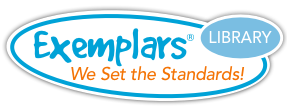Grade 1 - Geometry Unit
The Geometry Unit involves analyzing attributes of two-dimensional shapes in order to answer questions such as:
- What makes all of these shapes triangles?
- Why is this shape a rectangle and not a triangle?
- When I turn this shape, why is it still a square?
- This shape is big and yellow. This shape is small and blue. Why are they both hexagons?
- How are these shapes different from each other?
- How do the shapes fit together and come apart?
- Which shapes do you find easiest to combine?
- What do you notice about the faces of your shapes?
Math Concepts and Skills:
The student analyzes characteristics of two-dimensional shapes to develop generalizations about their properties.
The student:
- sorts and classifies regular and irregular two-dimensional figures and describes their attributes using formal geometric terminology (such as vertex and side).
- distinguishes between attributes that define a two-dimensional shape and attributes that do not define it.
- creates a target two-dimensional shape (such as a circle, triangle, rectangle, square—as a special rectangle—rhombus, and hexagon) by joining two, three, or four figures in more than one way if possible.
Summative Assessment Task
Students determine the three shapes Sarah draws on her paper so that one shape has three sides and two shapes have four sides.
Instructional Tasks/Formative Assessments
Students group attribute blocks without using color or size.
Students determine what three different shapes Leah can make on her paper so that each shape has four corners.
Students group pattern blocks without using color.
Students design two different quilt squares that Granny can use to make a quilt.
Using pattern blocks, students determine two ways to make the same shape as the yellow pattern block.
Students show four different shapes that can be made so that each shape has more than three sides.
